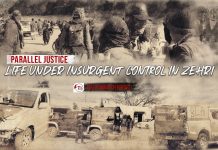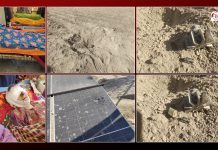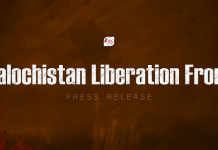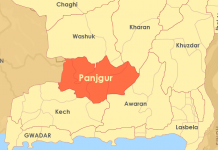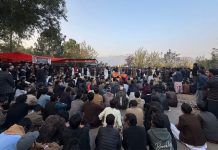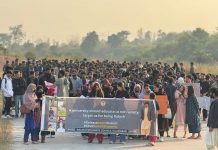The People’s Defense Center (HSM) has claimed responsibility for a deadly attack on Turkey’s Aerospace Industries (TUSAŞ/TAI) campus in Ankara on October 23. The attack, conducted by the “Namiran” (Immortals) Battalion, an autonomous unit within the Kurdish armed group, targeted the TUSAŞ campus to protest Turkish military operations in Kurdish regions.
In a statement released by the HSM Headquarters Command, the organization described the operation as a meticulously planned and self-sacrificing mission executed by two guerrillas who lost their lives during the assault. The fighters were identified by HSM as Mine Sevjîn Alçiçek, code-named Asya Ali, from İzmir, and Ali Örek, code-named Rojger Hêlîn, from Şirnex. Both guerrillas were reportedly members of the Immortals Battalion, a rarely activated unit known for high-profile, symbolic attacks.
Purpose of the Attack
The HSM statement emphasized that the attack on TAI, which manufactures defense systems and aircraft, was intended to draw attention to the impact of Turkey’s military activities on Kurdish regions. “Weapons produced by TAI have killed thousands of civilians in Kurdistan, including women and children,” the statement alleged, further claiming that Kurdish groups have a “legitimate right” to target the facilities responsible for manufacturing these weapons.
HSM noted that, as a principle, its forces do not target civilians, and clarified that the attack was exclusively focused on TAI’s military-linked operations. HSM spokespersons indicated the assault was planned well in advance and was unrelated to recent political tensions within Turkey.
Civilian Casualties and Regional Tensions
Following the Ankara attack, the Turkish Ministry of Defense conducted retaliatory airstrikes, which they claimed targeted guerrilla strongholds but according to the HSM, those airstrikes impacted civilian areas. The group claimed that airstrikes struck non-military sites in Rojava, Kurdistan, and Sinjar, allegedly leading to the deaths of 15 civilians, including children. These incidents, HSM stated, demonstrate a “hostility toward Kurds” and constitute a violation of international law.
The statement called on democratic and leftist groups in Turkey to “empathize” with the situation, asserting that the attack on TAI was a military, not civilian, operation. “An honorable military army cannot rain down cannons and missiles on civilians,” the statement read, calling for Turkish authorities to end attacks on Kurdish regions.
Symbolism and Dedication
HSM further honored the two fighters involved in the Ankara action, dedicating the attack to Comrade Bêrîtan Gülnaz Karataş, a symbolic martyr in Kurdish circles who died 32 years ago. This operation, the group explained, serves as both a tribute and a tactical response to perceived misconceptions regarding their military strength.
The group concluded with a commitment to continue their resistance, calling the TAI attack a testament to their “professional and sophisticated” capabilities, while pledging allegiance to the Kurdish cause and leadership.
Reactions and Ongoing Conflict
This incident is likely to intensify already high tensions between Turkish forces and Kurdish armed groups, which have been engaged in sporadic conflict for decades. Turkish authorities have not yet confirmed the full extent of the damage at TAI or the number of casualties involved, but officials have reportedly increased security measures across critical infrastructure.
In response to the escalating situation, Kurdish and international observers are calling for de-escalation and renewed dialogue to prevent further civilian harm.



